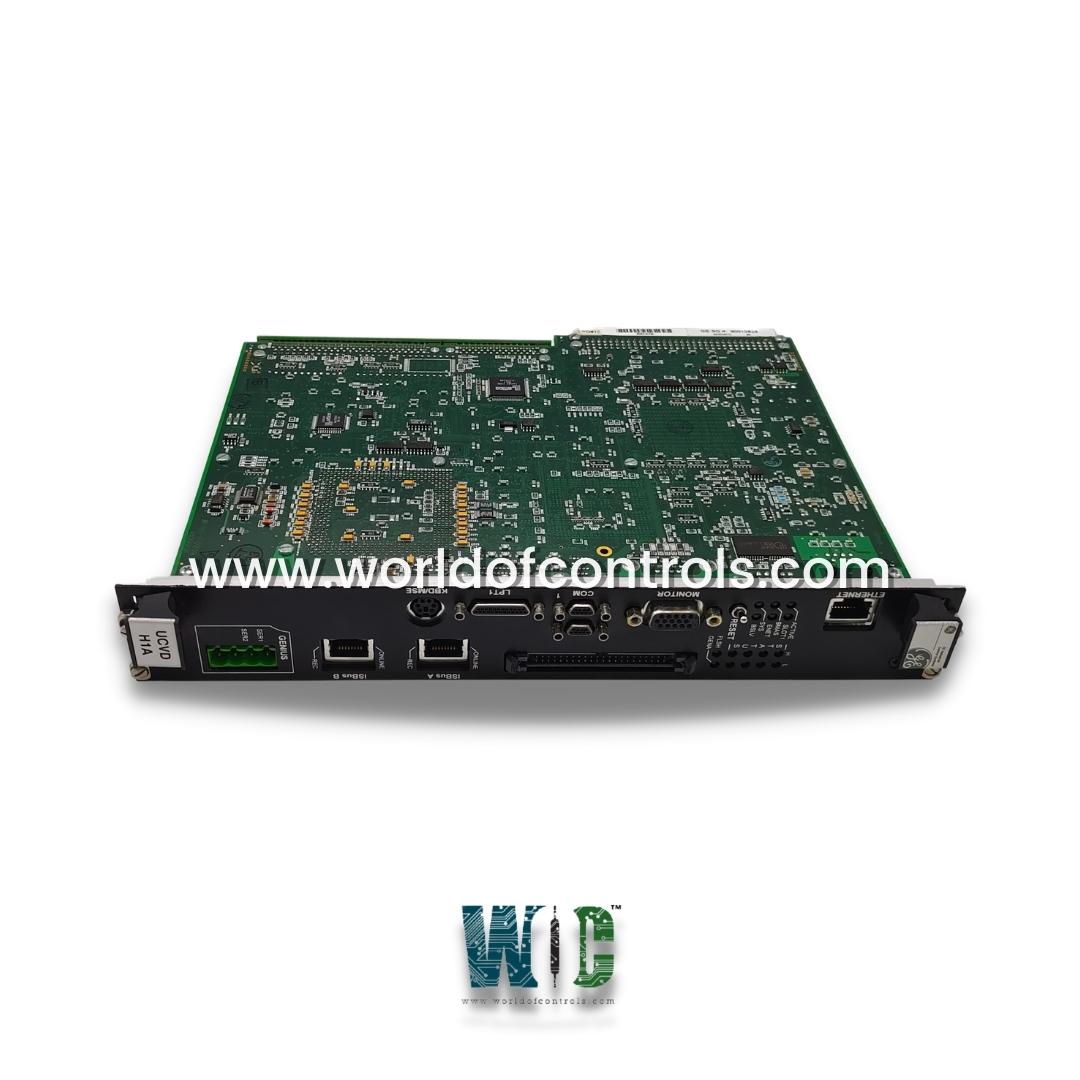SPECIFICATIONS
Part No.: IS215UCVDH2AN
Manufacturer: General Electric
Country of Manufacture: United States of America (USA)
Operating System: QNX
Microprocessor: AMD-K6 300 MHz
Product Type: double-slot board
Availability: In Stock
Series: Mark VI
Functional Description
IS215UCVDH2AN is a double-slot board developed by GE. It is a part of Mark VI control system. The UCVD board harnesses the processing power of a 300 MHz AMD K6 processor, renowned for its robust performance and reliability in industrial applications. The inclusion of this processor empowers the UCVD board to execute complex control algorithms and visualization tasks with efficiency and precision.
Features
- With 8 MB of flash memory onboard, the board ensures swift access to essential firmware and configuration data, facilitating seamless boot-up and system initialization processes. This flash memory serves as a non-volatile storage solution, preserving critical data even in the event of power loss or system failure.
- Complementing the flash memory, the board boasts 16 MB of dynamic random-access memory (DRAM), providing ample workspace for temporary data storage and manipulation. This DRAM serves as the primary memory resource for executing control algorithms, storing intermediate results, and buffering data for visualization purposes.
- The generous memory capacity of the board ensures smooth multitasking and responsive operation, even under demanding workload conditions.
Ethernet interface
- Twisted Pair 10BaseT, RJ-45 Connector: The Ethernet interface utilizes a twisted pair 10BaseT connection with an RJ-45 connector. This standard configuration ensures compatibility with a wide range of networking equipment and simplifies installation and integration processes.
- TCP/IP Protocol: TCP/IP (Transmission Control Protocol/Internet Protocol) serves as the foundation for communication between the controller and toolbox. This widely adopted protocol suite ensures reliable and efficient data transmission, facilitating robust communication across the network infrastructure.
- Serial Request Transfer Protocol (SRTP) Interface: The SRTP interface provides a streamlined communication channel between the controller and Human-Machine Interface (HMI). This protocol enables efficient exchange of data and commands, facilitating real-time monitoring and control of system parameters through the graphical user interface provided by the HMI.
- EGD Protocol: The Ethernet Global Data (EGD) protocol is employed for communication with CIMPLICITY HMI and Series 90-70 PLCs. EGD facilitates high-speed data transfer over Ethernet networks, enabling seamless integration of the controller with these industrial automation systems. This protocol ensures timely delivery of critical data, enhancing system responsiveness and efficiency.
- Ethernet Modbus Protocol: Additionally, the Ethernet Modbus protocol is supported for communication between the controller and third-party Distributed Control Systems (DCS). Modbus over Ethernet provides a standardized and interoperable communication solution, allowing the controller to exchange data with external DCS platforms seamlessly. This protocol facilitates integration with diverse industrial control systems, enhancing interoperability and scalability.
The WOC team is always available to help you with your Mark VI requirements. For more information, please contact WOC.
Frequently Asked Questions
What is IS215UCVDH2AN?
It is a double-slot board developed by GE under the Mark VI series.
What does the BMAS LED indicate?
The BMAS LED indicates that VME master access is currently occurring, highlighting ongoing communication activity with the VME bus.
What does the ENET LED signify?
The ENET LED indicates Ethernet activity, showing that data is being transmitted or received over the Ethernet interface.
What does the BSLV LED signify?
The BSLV LED indicates that VME slave access is currently occurring, indicating ongoing communication activity with VME slave devices.
How is the status displayed using the LEDs?
The STATUS LED displays a rotating LED pattern when the system is operating normally. In the event of a fault, this LED flashes an error code, providing visual indication of the fault condition.
What does the FLSH LED indicate?
The FLSH LED indicates that data is being written to the Flash memory, highlighting ongoing Flash memory operations.
